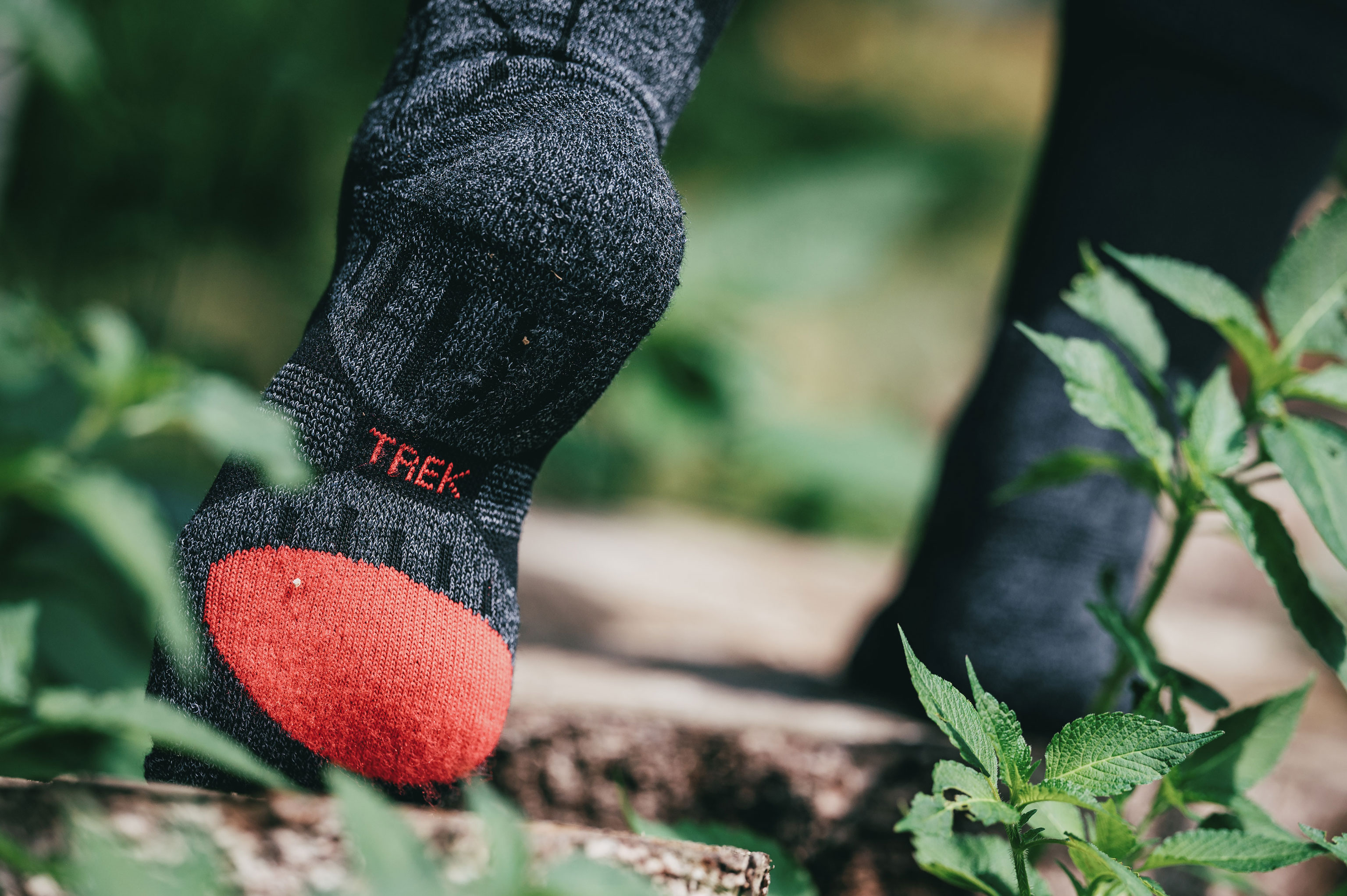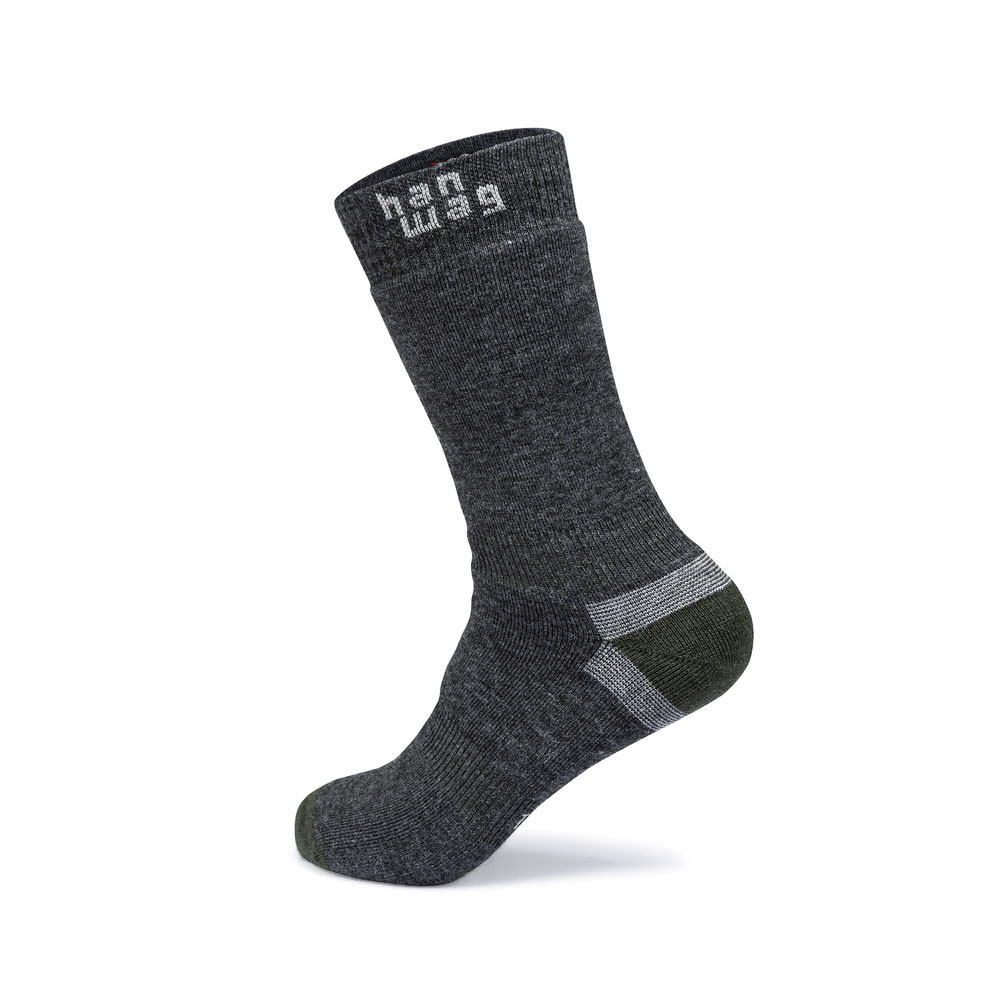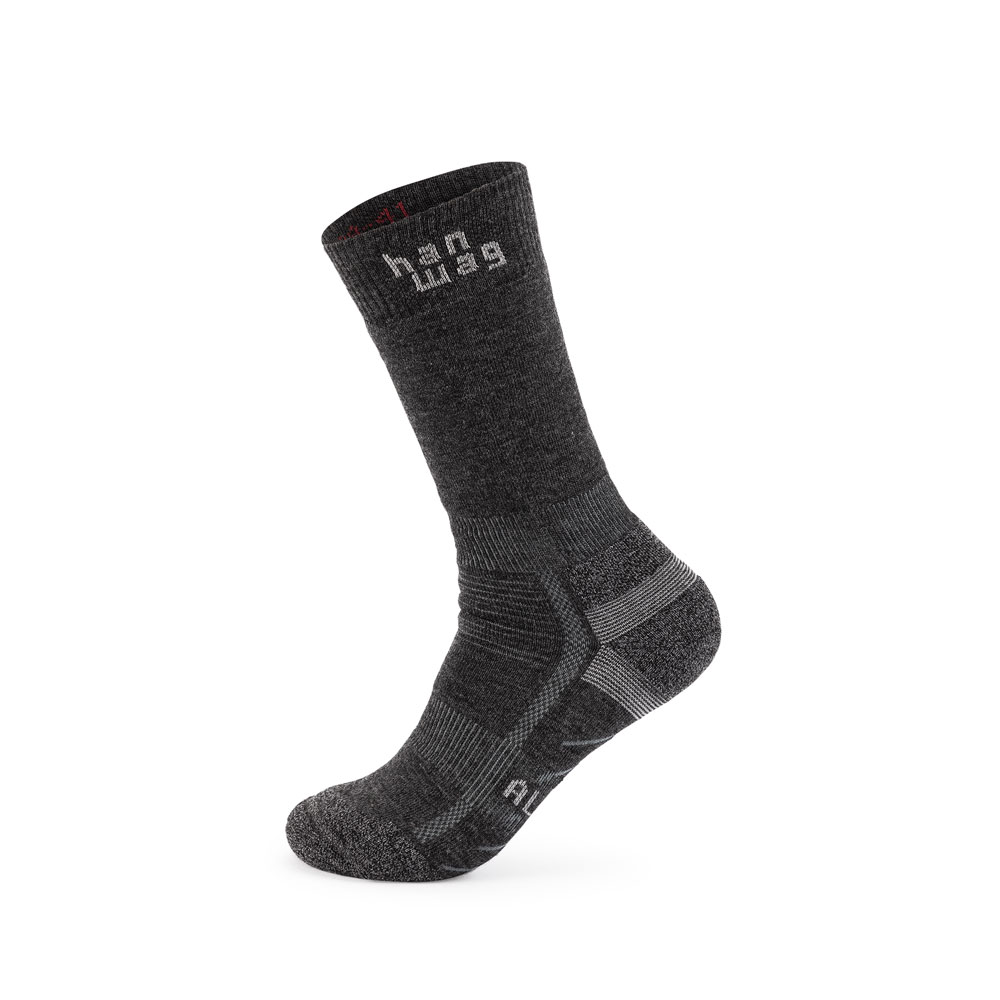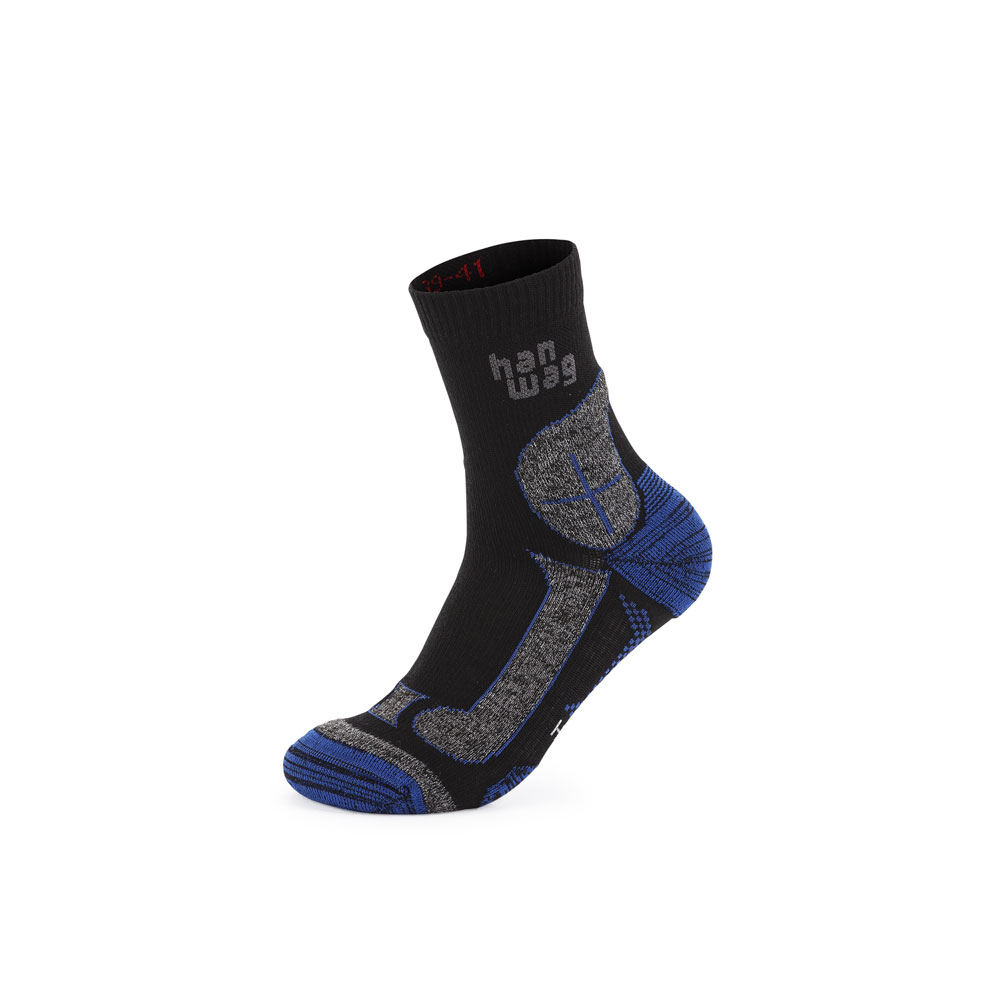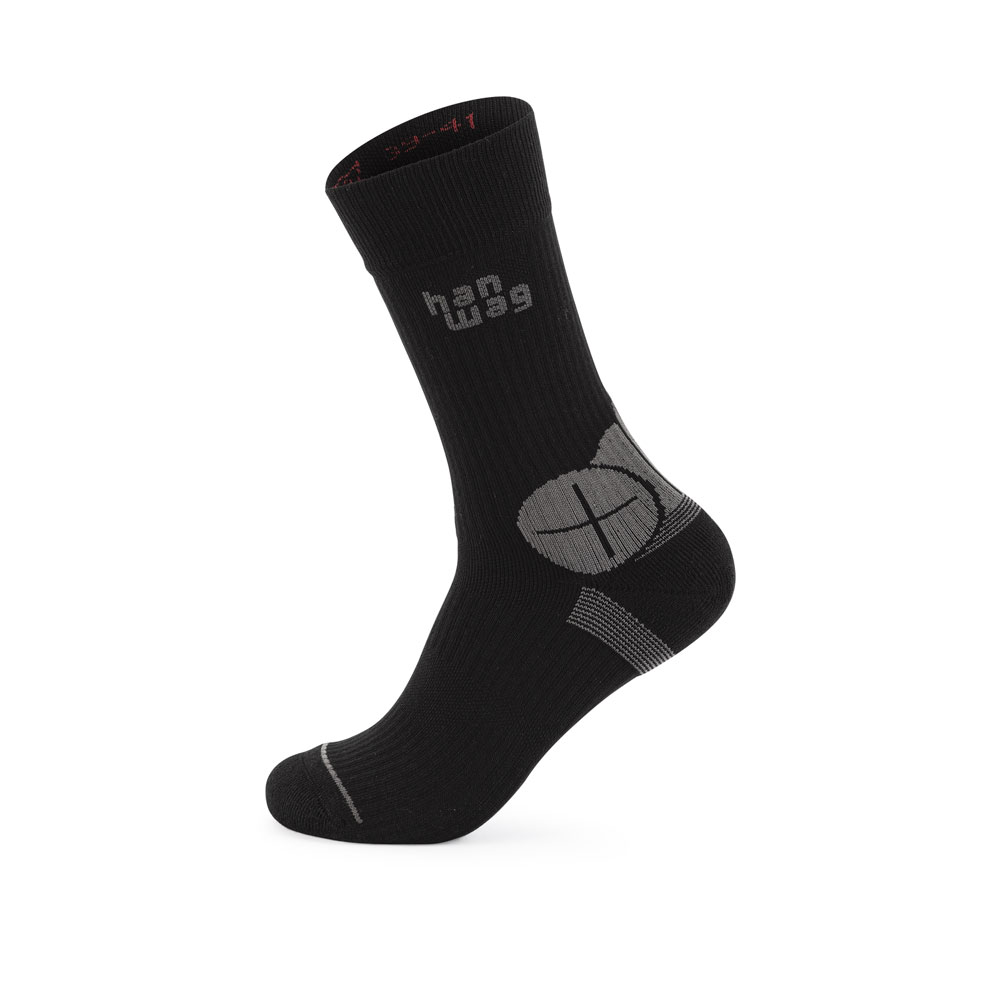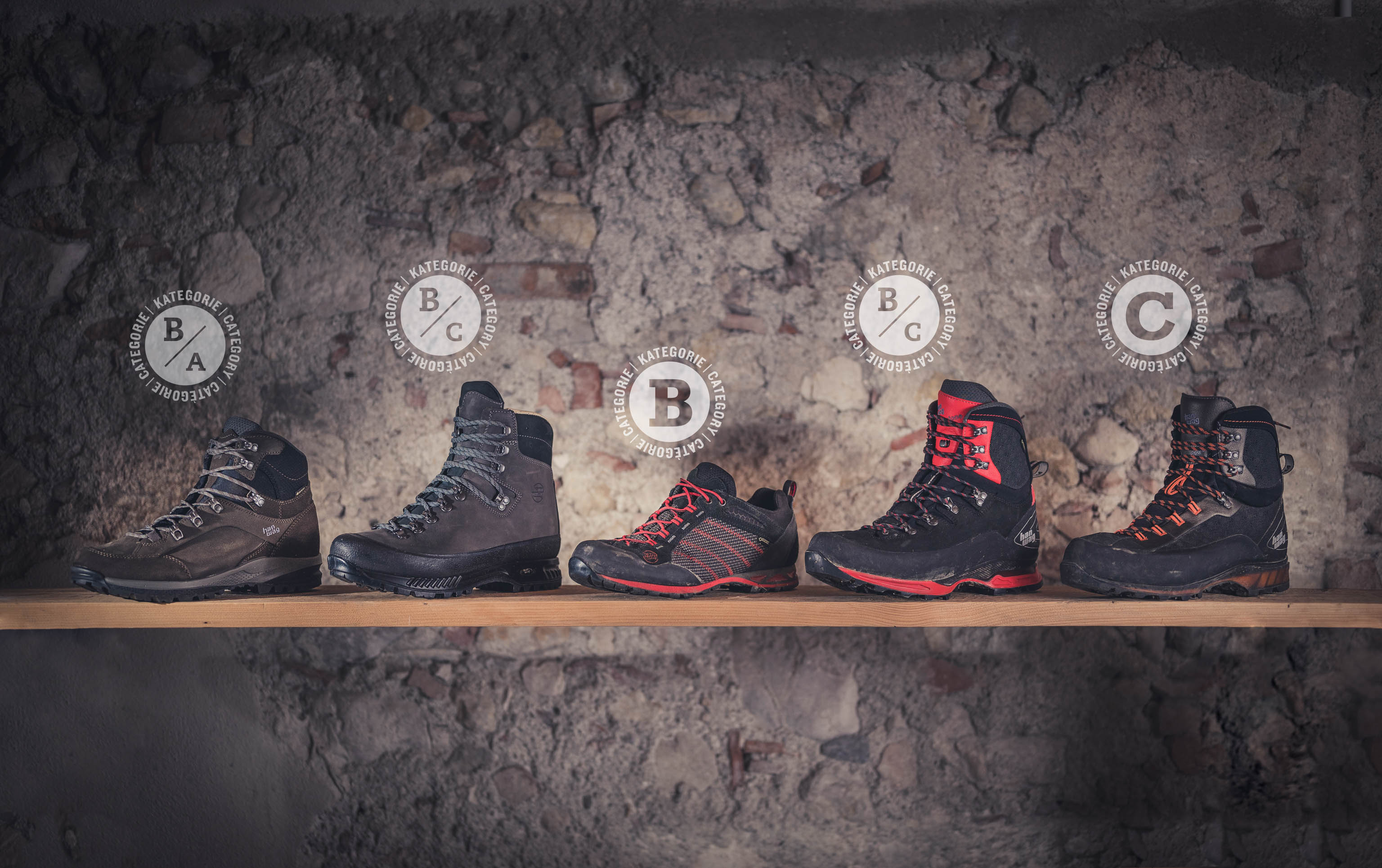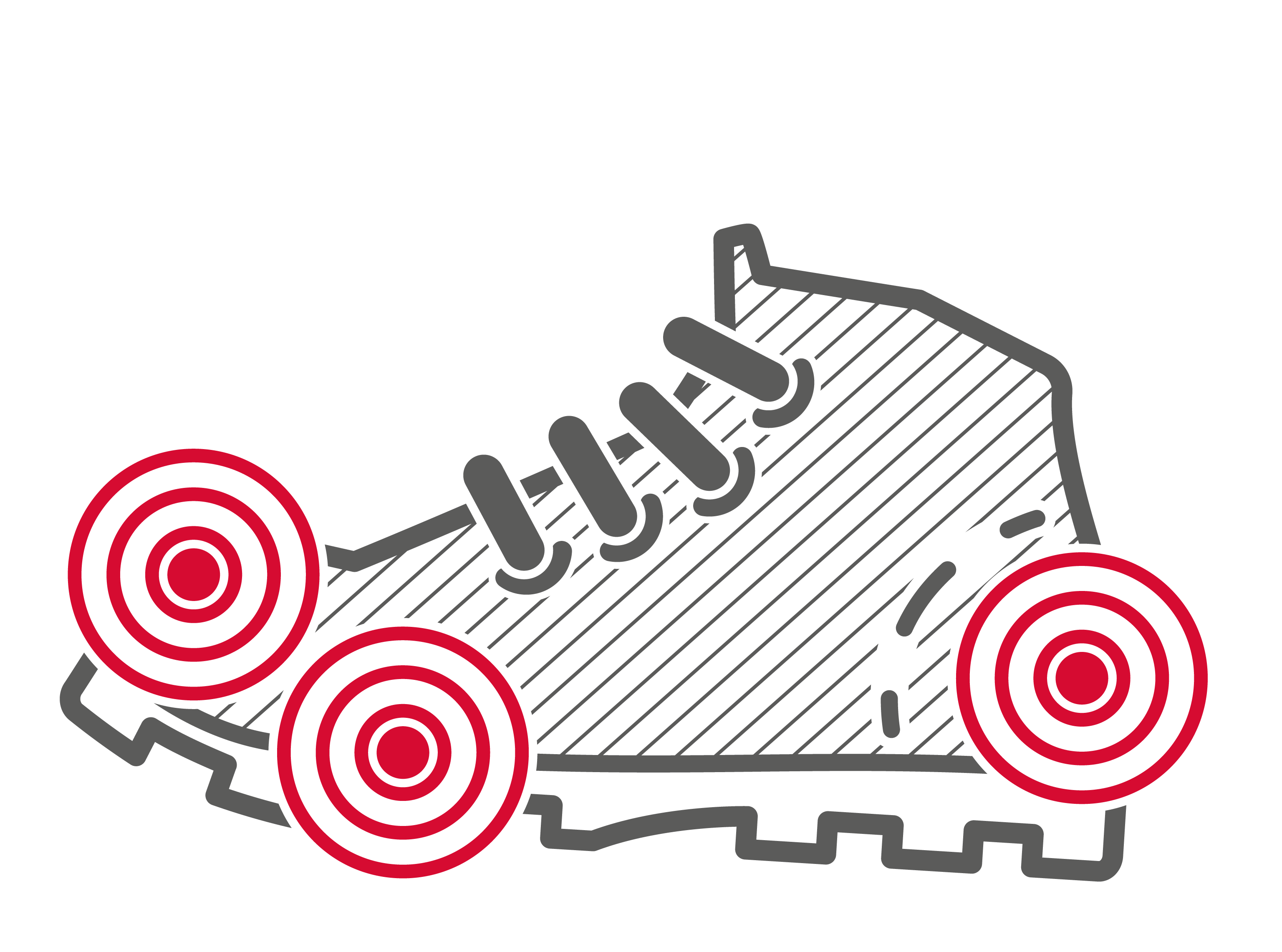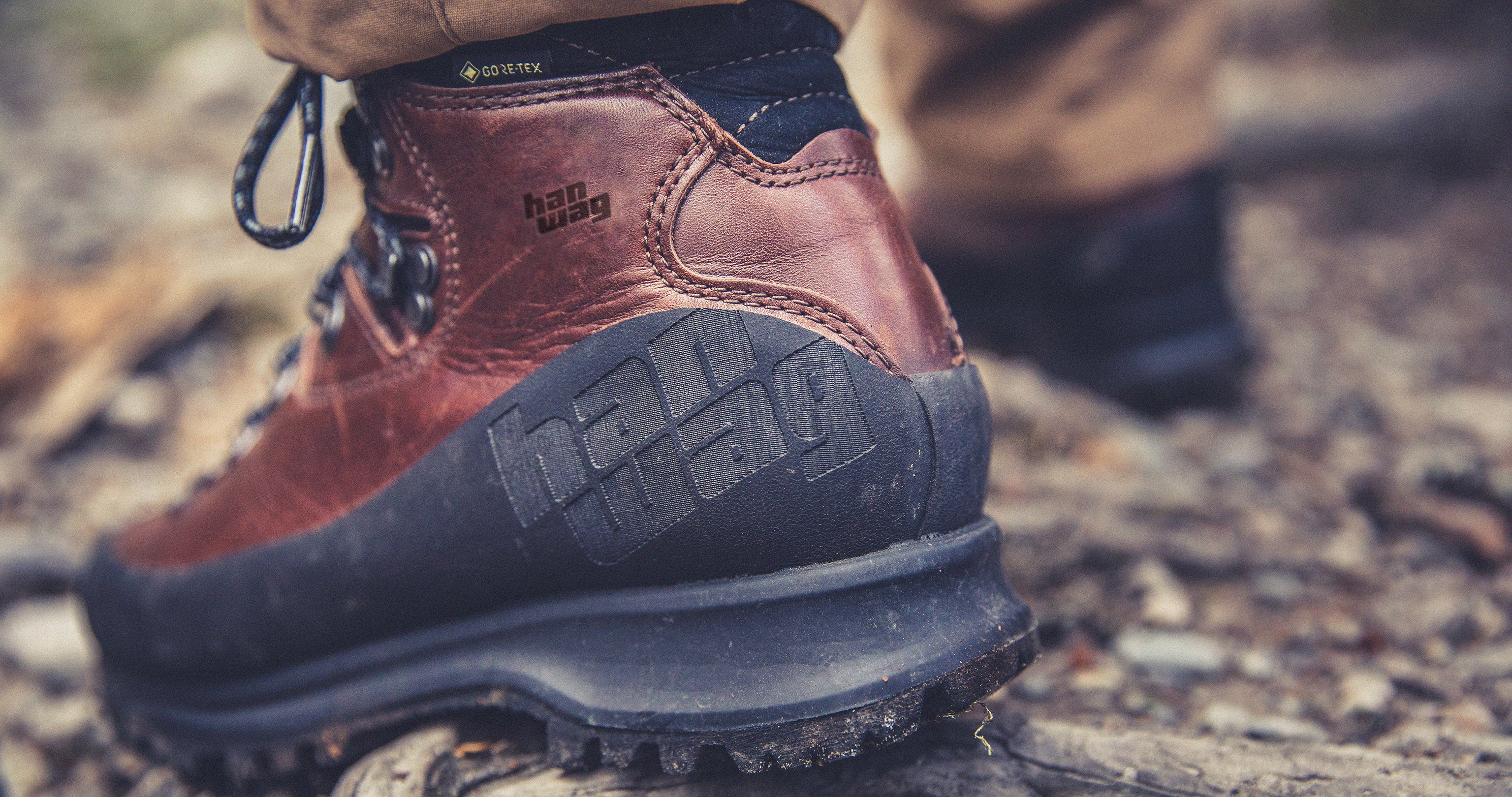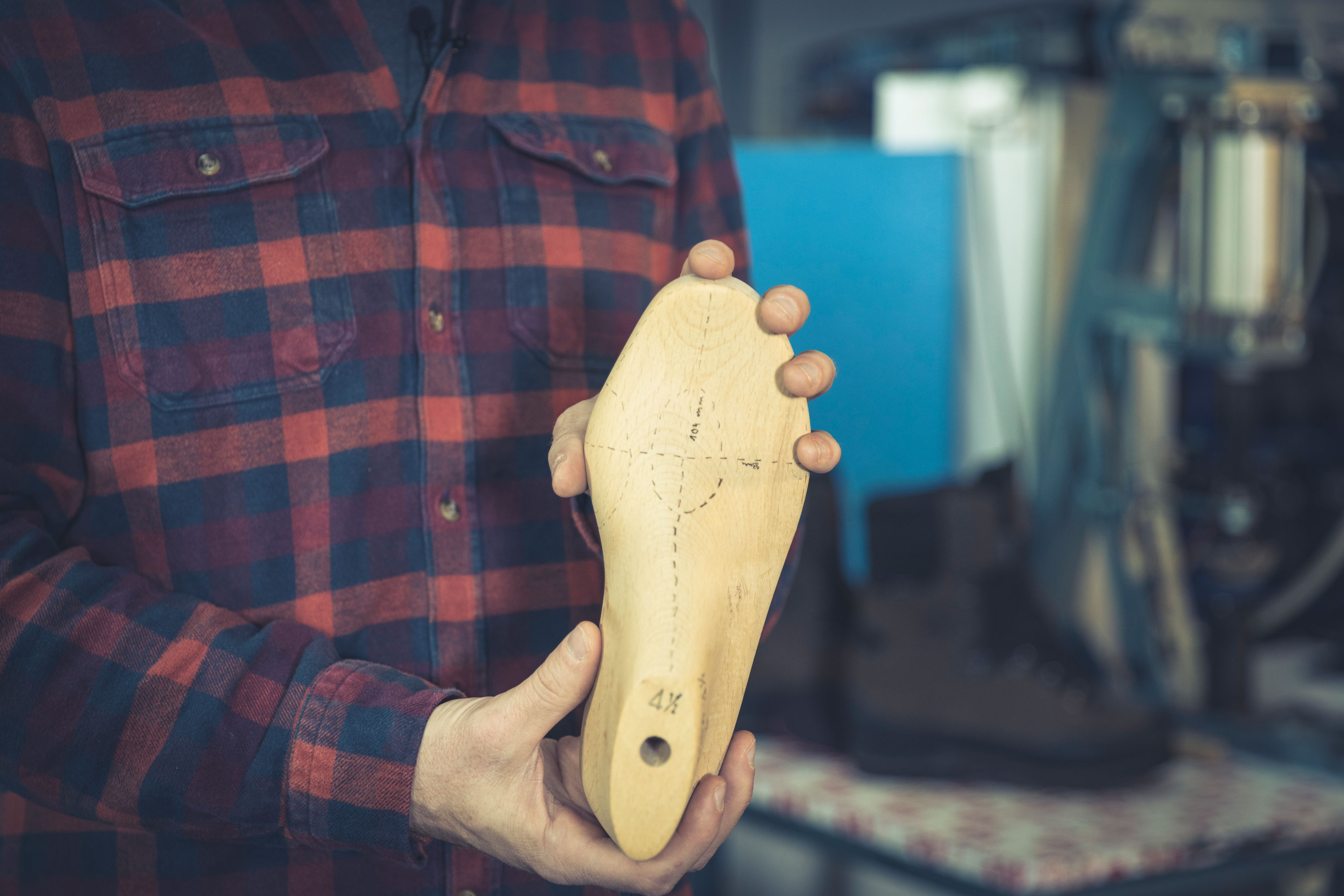Updated on
-
Sneak Peak – The 5 Key Tips
- Do you need long or short hiking socks? It depends on how high your boots are. Your socks should be 3 cm higher than the top of your boots.
- Thick hiking socks or thin hiking socks? It depends on a number of factors, including: weather, boot fit, tour selection and boot type.
- Synthetic fibre socks dry fast, but quickly become smelly. Merino socks tend to be warmer and odour neutral.
- Hiking socks should fit snugly, to prevent blisters. They have special padding at pressure points.
- There are dedicated socks for summer and winter, and also for particular types of feet (e.g. people with bunions).
For more in-depth information, read the whole article.
- Are hiking socks necessary?
- What makes a sock the best sock for hiking?
- Which socks are best for hiking? It’s all in the length
- Thick or thin hiking socks
- Why do hiking socks have padding?
- What’s the difference between a hiking sock and a trekking sock?
- What’s the best hiking sock material?
- How big should hiking socks be?
- What are bunion socks?
- How should hiking socks be washed?
Choosing the right hiking sock tends to be seen as less important than choosing the right hiking footwear, but socks play a key role when it comes to comfort and the prevention of blisters or pressure points. And there is such a wide range of hiking or trekking socks to choose from:
- Long, mid-calf or short hiking socks
- Thin hiking socks and thick walking socks
- Different materials with different performance
- And then there are hiking socks and trekking socks – what’s the difference?
Questions and more questions. And that’s why we’ve come up with our hiking sock advice page, to help answer all your questions about hiking socks.
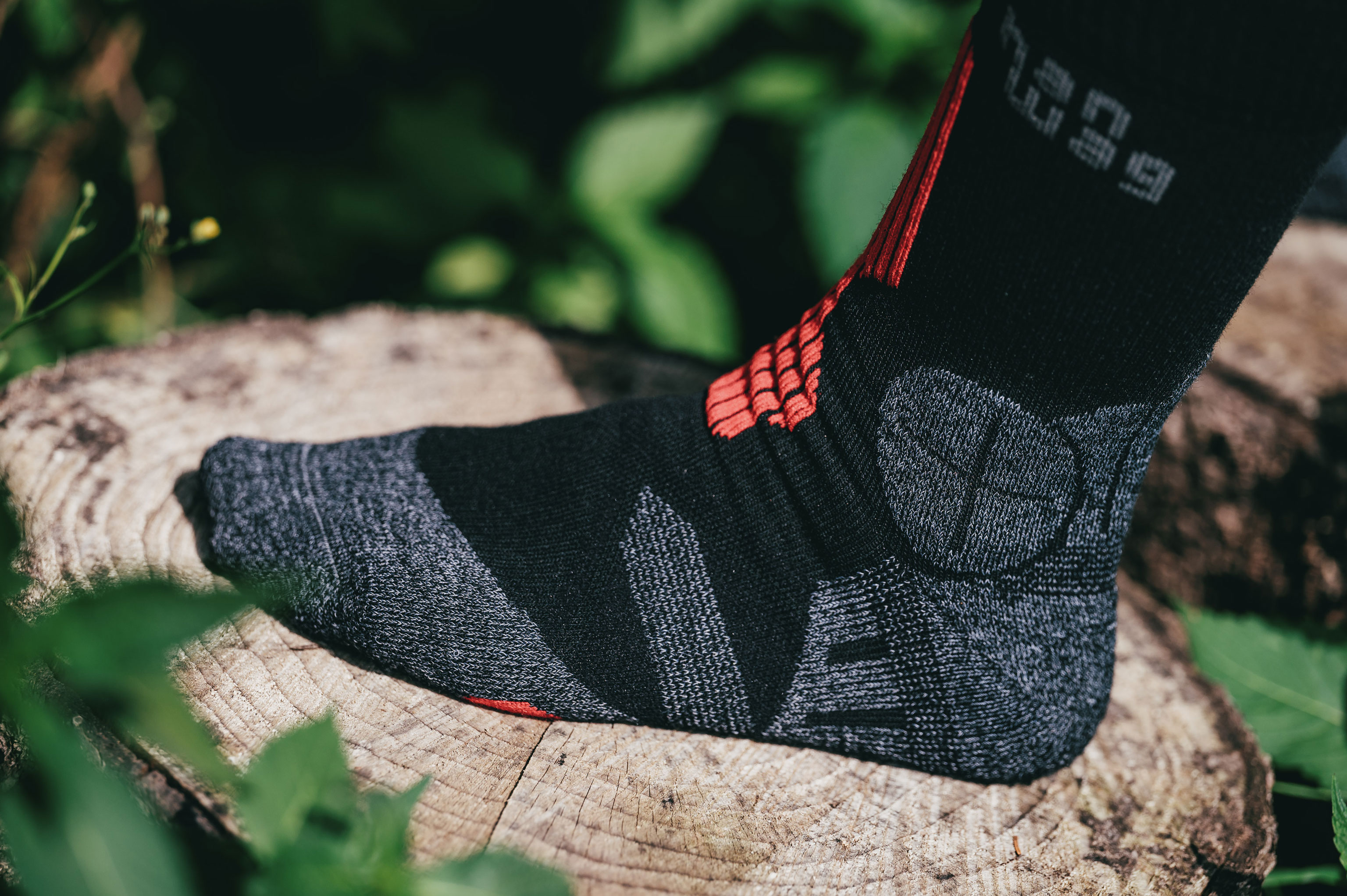
Our test winner: The HANWAG Trek Sock
“There’s no faulting them”, is what the Süddeutsche Zeitung reported in its Trekking sock test (only in German). They also said: “The perfect socks for long-distance, multi-day hikes. Exceptional fit, ergonomic design (…), with zero creases.”
Check out the Trek Sock and all our hiking and trekking socks in our webshop.

Expertise and know-how for your outdoor adventures – welcome to the HANWAG BOOTCAMP. Watch the how-to videos on our YouTube channel.
1. Are hiking socks necessary?
You might be asking yourself: Are hiking socks really necessary? Can’t I just wear my regular everyday socks or sports socks?
As with many other types of sport, hiking or trekking socks are specially designed for your feet and to go with hiking boots / shoes. Tennis socks or sports socks tend to be less cushioning, which is not ideal when wearing sturdy hiking boots, for example. Your regular everyday socks are usually made from cotton and are looser fitting – which means they’re almost guaranteed to give you blisters. And anyone who’s ever had to hike with a painful blister on their heel or the sole of their foot will not want to repeat the experience.
So what makes for a good hiking sock? Let’s find out more about what goes into making the best hiking socks.
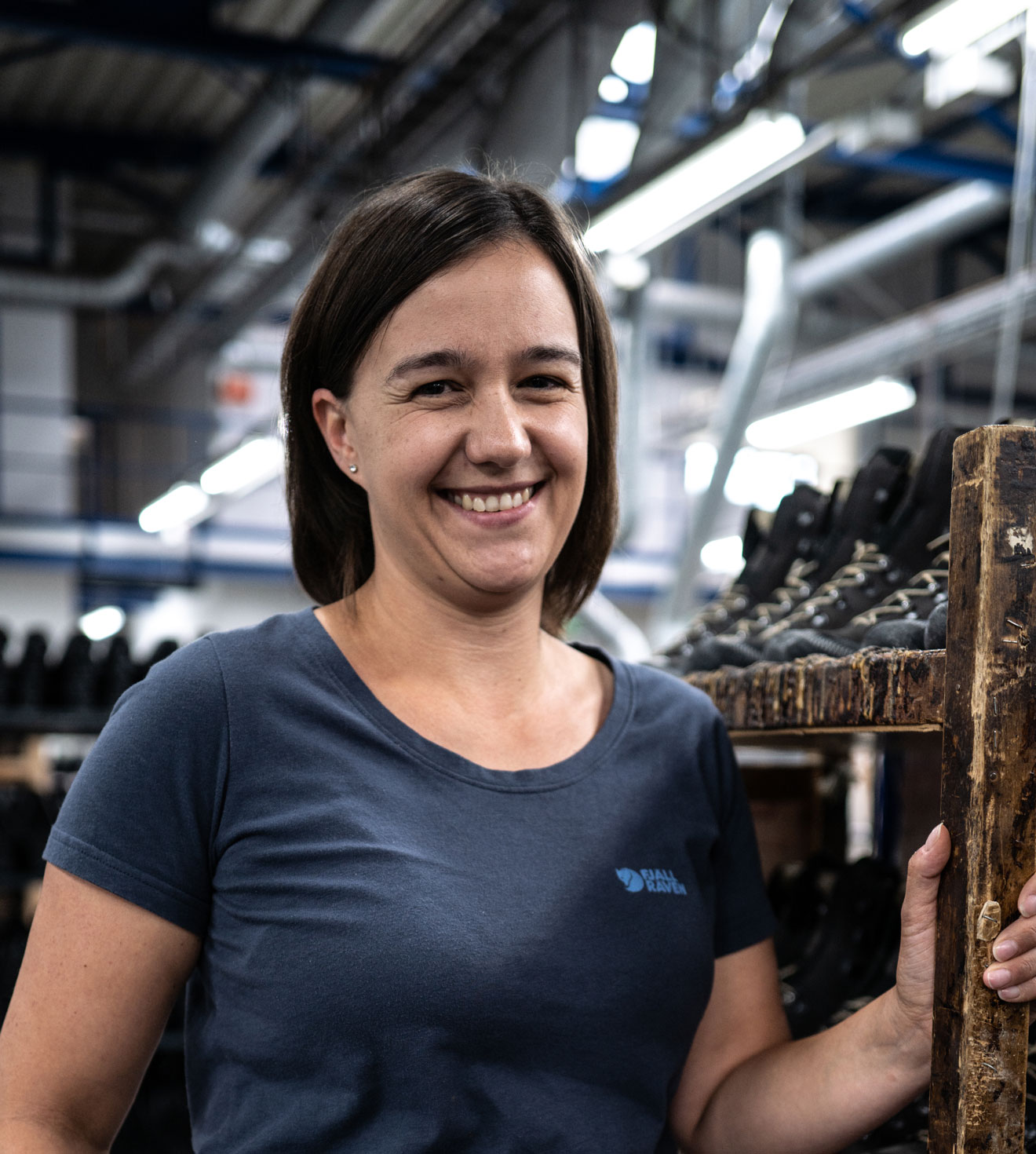
"Good hiking socks are ergonomically shaped to fit the anatomy of the foot."
Sina Dietze, Material Product Manager HANWAG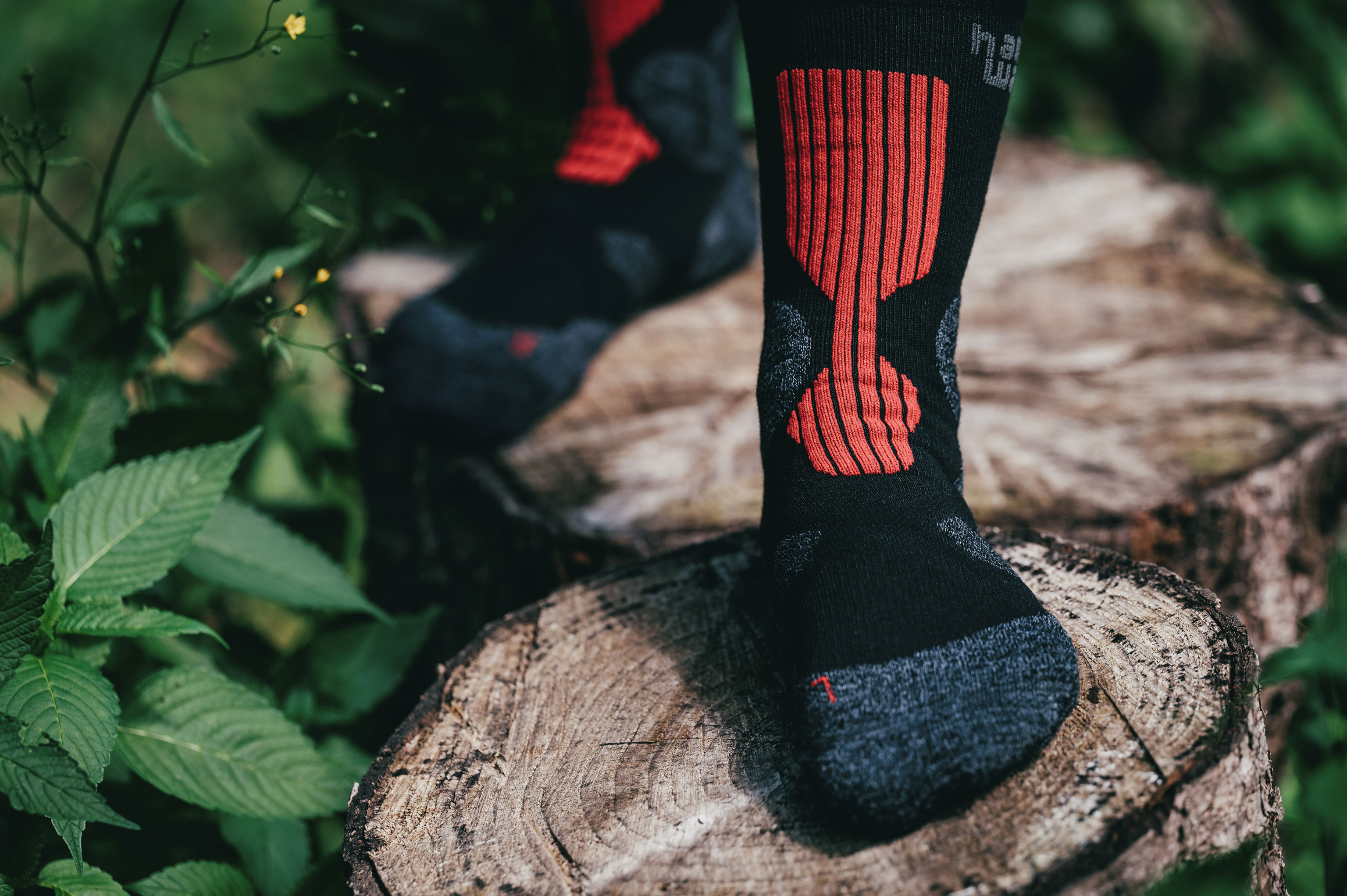
Tip: You often hear people say you should wear two pairs of socks, with a very thin pair underneath and a thicker one on top. Back in the day where thick wool socks were all that was available, that was a good idea. But with the hiking and trekking socks we have today, it’s no longer necessary or advisable.
2. What makes a sock the best sock for hiking?
“Good hiking socks should be cut to the shape of the foot – ergonomically,” explains Sina Dietze, Material Product Manager HANWAG. This is why you have a left and a right sock. The best hiking socks are the ones that fit your foot perfectly and don’t slip down while you walk – especially inside your footwear. Because that will lead to creases forming at the toes or under the foot. And where there are creases, blisters or pressure points are sure to follow.
At the same time, hiking socks should not constrict the foot or cut into the flesh. Everyone’s foot shape differs. For instance, the height of the arch (‘instep’) can differ greatly. And so how a hiking sock fits also differs from person to person.
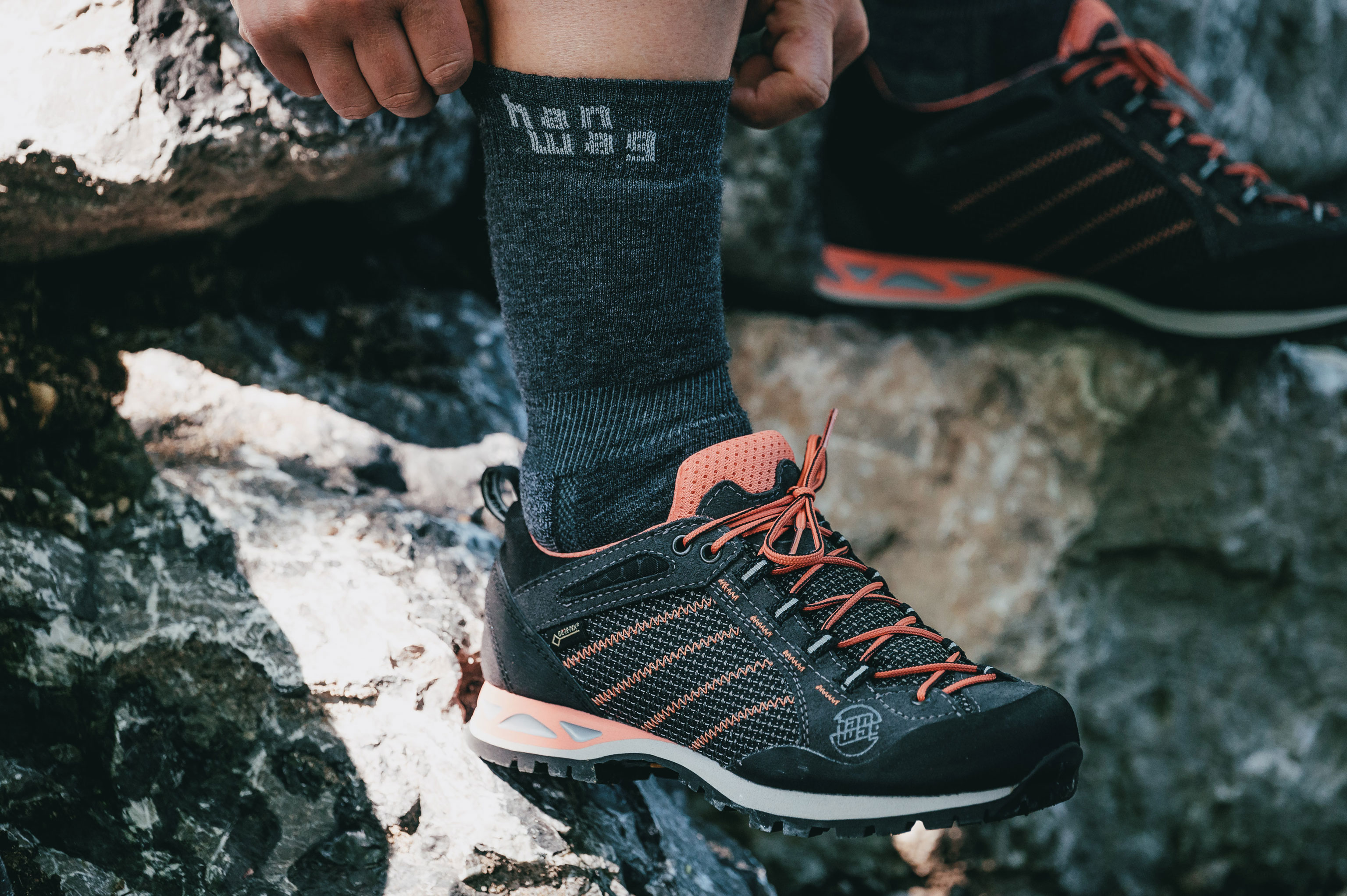
3. Which socks are best for hiking? It’s all in the length
Short or long – choosing the length of your hiking sock depends on your footwear. But whichever you choose, your hiking socks should be higher than the cuff of your footwear (by at least 3 cm). Otherwise, you risk the shoe lining rubbing against bare skin as you walk – which is guaranteed to get painful.
For hiking boots that go up to or over the ankle, you need hiking socks that are longer cut. Short hiking socks are only suitable for low-cut hiking shoes, such as approach shoes.
4. Thick or thin hiking socks
Opting for thick or thin socks depends on a number of factors:
- Climate/season: In the autumn or in colder climates, thick hiking socks are best. For winter hiking or snowshoeing, extra warm hiking socks are available like our HANWAG Thermo Sock. In the summer and in warmer climates, thin hiking socks are better because your feet will sweat less in them.
- Footwear fit: You can create a more snug fit by using thick hiking socks if there is plenty of space inside your hiking shoes. If, however, they are quite snug already, then opting for thinner hiking socks is advisable, as thick ones could make the fit too tight.
- Type of hike: If you’re planning on a shorter hike, carrying a light pack, then thin socks will provide enough cushioning and comfort. But if it’s a longer trek, carrying a heavy pack, then thick socks that are well cushioned are better. These will support and protect your feet while they are having to work really hard. The HANWAG Alpine Sock is specially designed for demanding mountain journeys.
- Footwear: Heavy alpine boots are less flexible than lightweight hiking boots. Which is why you should base your sock decision on the type of footwear you will be wearing. For stiffer, less flexible boots, a pair of thick walking socks provides better comfort and blister protection. For lighter, more supple hiking boots, a pair of thin hiking socks will usually suffice.Hiking or trekking socks are different from regular socks not just in terms of the material thickness. They also have extra padding in specific areas.

"Choosing the right padding thickness depends on your footwear type and what kind of hike or trek you plan to do."
Sina Dietze, Material Product Manager HANWAGTip: When putting on hiking socks, always ensure the padded areas are in the right position e.g., centrally placed over the shinbone, and in a circle around the ankle bone.
5. Why do hiking socks have padding?
Good hiking socks help protect sensitive or high wear areas such as the shinbone with extra padding. The heel, ankle, toes and shinbone are all such areas. In these areas, the hiking sock material is usually thicker or reinforced.
“Choosing the right padding thickness also depends on what footwear type and what kind of hike or trek you plan to do,” explains Sina Dietze Material Product Manager HANWAG. As a general rule, the more demanding the hike or trek you plan to undertake (including how heavy your pack will be) and therefore the stiffer the boot, the more you should opt for a sock with good padding. Determining which hiking socks are best always depends on the circumstances you will use them in.
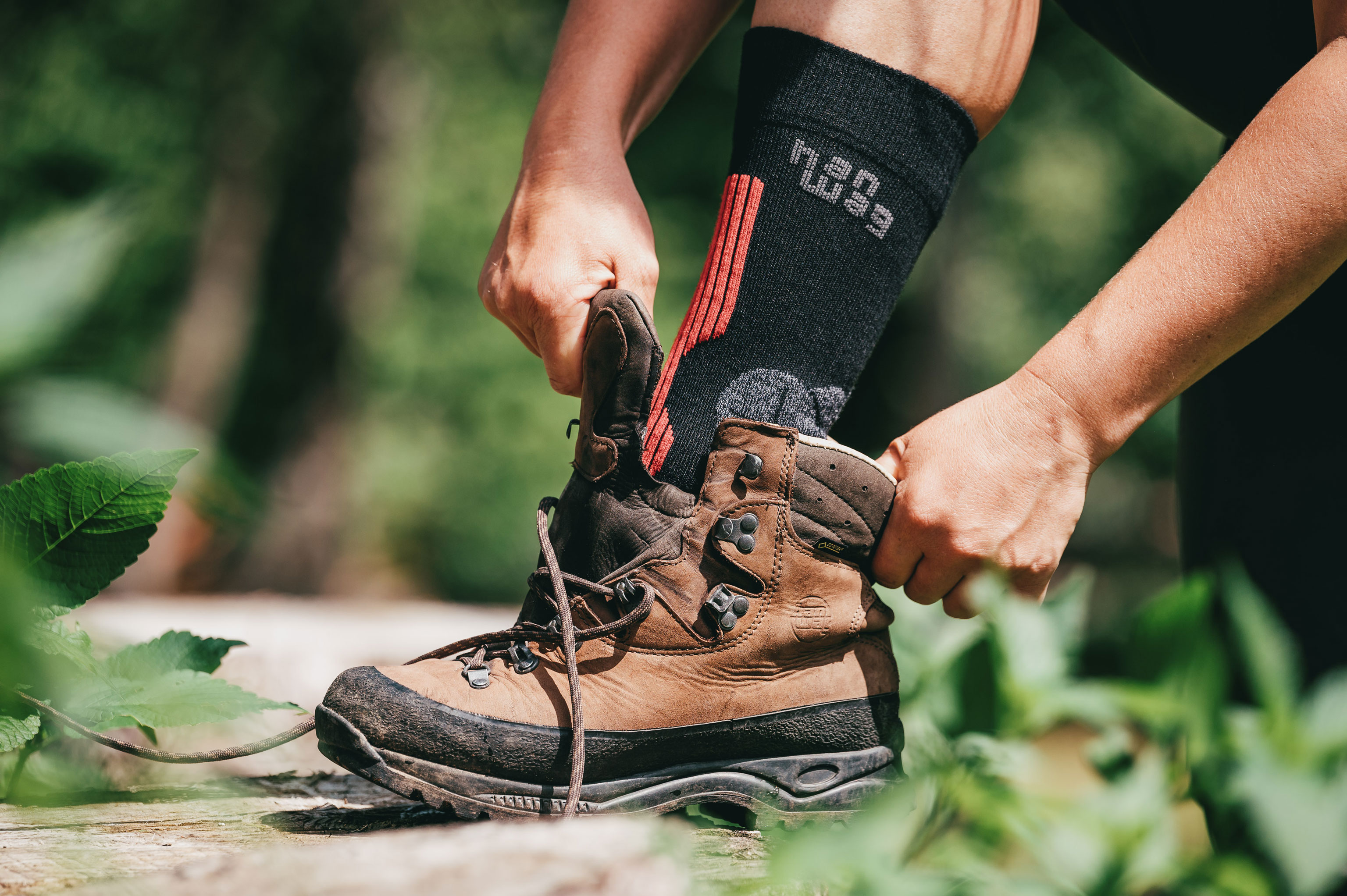
6. What’s the difference between a hiking sock and a trekking sock?
As we’ve seen, hiking socks are available in different lengths, thicknesses and amount of padding. To make things easier for you, here at HANWAG, we make a distinction between hiking socks (our ‘hike’ range) and trekking socks (our ‘trek’ range):
- Our hike models tend to be shorter, thinner and less padded. They are suited to shorter hikes in warmer conditions and carrying less gear.
- Our trek models are longer cut, thicker and have more padding. They are suited to longer trekking journeys, carrying a heavy backpack and for colder climates.
Both the hike and trek models are available in two different types of material.
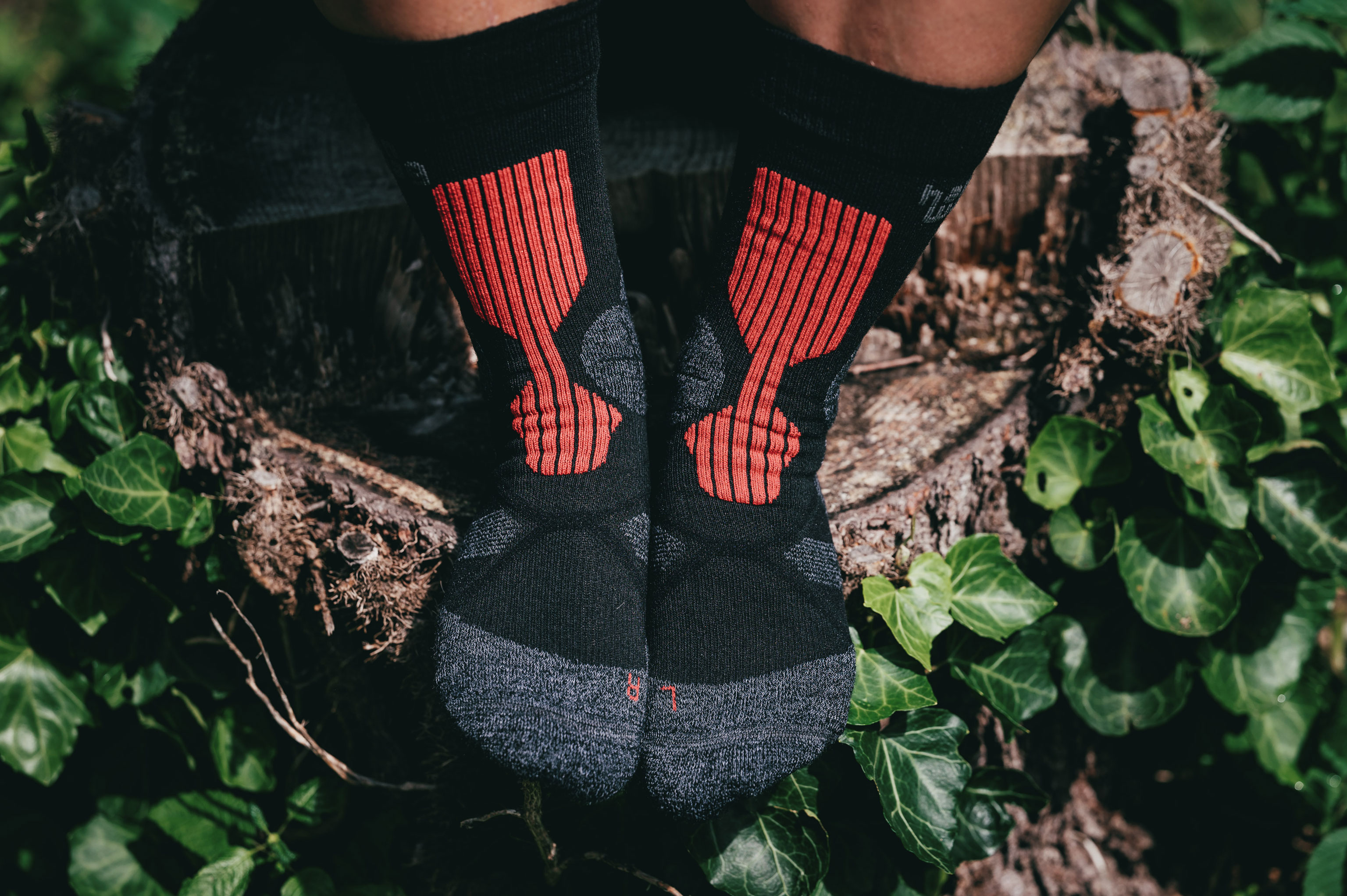
7. What’s the best hiking sock material?
Everyday socks are usually made of cotton. Cotton soaks up sweat and therefore creates a pleasant foot environment during lower output activities. But when you’re hiking or doing sport and your feet start to sweat properly, cotton has its limitations. It becomes saturated in sweat instead of wicking it away or allowing it to evaporate. With the enclosed nature of hiking footwear, this leads to a very wet foot climate. And that is the number one cause of blisters. This means that cotton is a no-go for hiking socks.
Specialist hiking or trekking socks these days are usually made of synthetic fibres like polyamide or polypropylene. These synthetic fibres have the advantage of being very durable and they are also very effective at wicking away moisture to the outside – resulting in drier feet. So, the higher the synthetic content of hiking socks, the better they are at preventing blisters. In addition, elastane, which is often blended with synthetic fibres, makes them stretchy and therefore better fitting around the foot.
Some hiking socks are also made with a high proportion of merino wool (40-80%) blended with synthetic fibres. Merino absorbs up to 30% of its own weight in moisture, but unlike cotton, it does not feel wet. The wool fibres of the merino sheep are also resistant to unpleasant odours, which synthetic fibres often tend to be more prone to. Merino wool is therefore the best option if you want hiking socks that don’t smell. And unlike other types of sheep’s wool, merino wool has exceptionally fine fibres and is therefore not scratchy against the skin.
Climate: Merino wool’s higher insulation performance makes it well suited to hiking in colder climates. For more sweat-inducing treks or hikes in hot conditions, synthetic fibres are the best option.
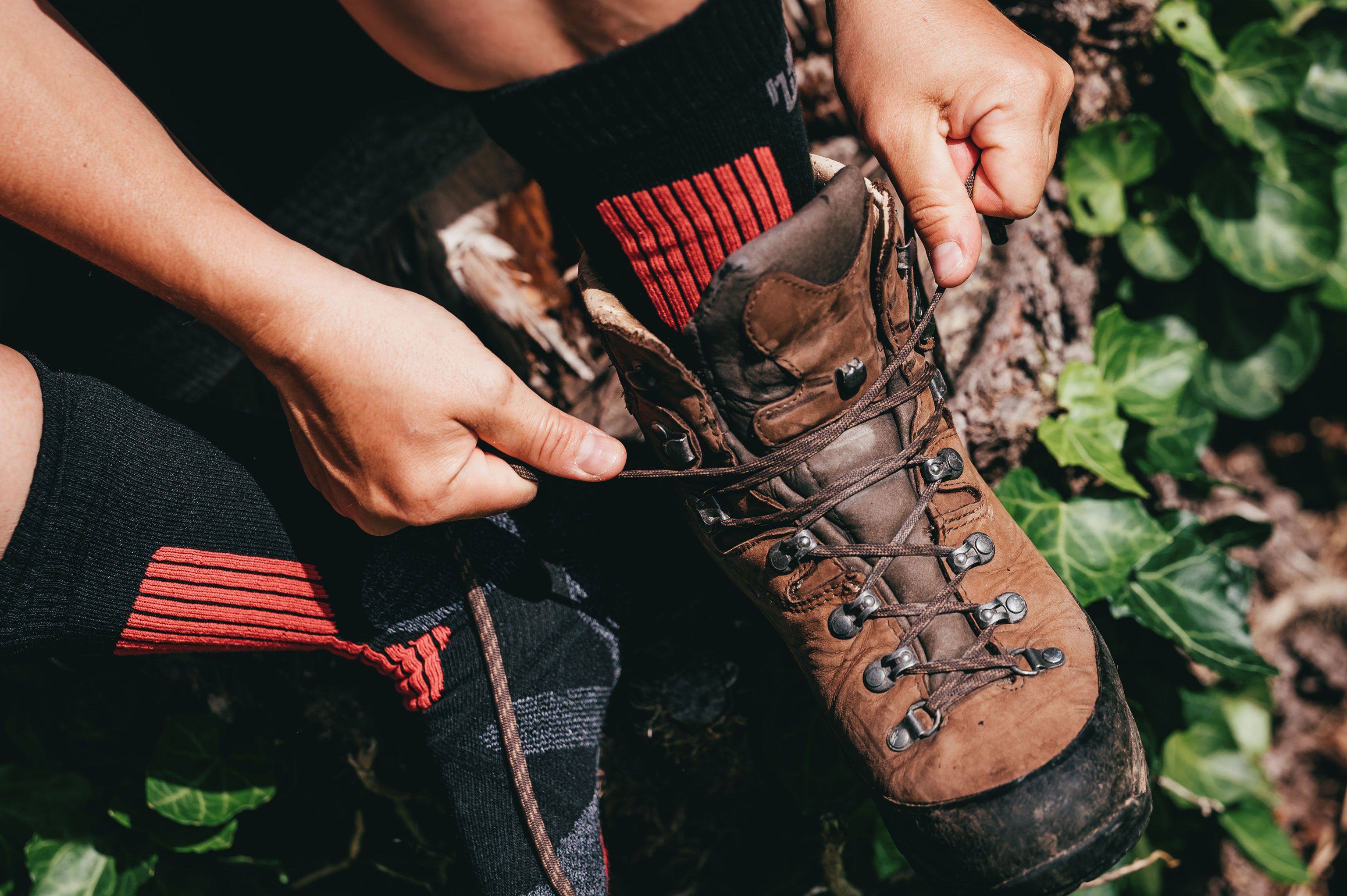
8. How big should hiking socks be?
Hiking or trekking socks should wrap around the foot, nice and snug. When you put them on, it is a good thing if you have to pull at them and use an element of force to get them on. Because a snug fit is the best way for hiking socks to prevent blisters.
It’s fine to buy hiking and trekking socks one or even two sizes smaller than your regular shoe size. Since socks usually come in size ranges (e.g. 39-41) you should opt for the range that has your regular shoe size at the top of its range – or even smaller.
Watch the video: Our Buyer's Guide Hiking Socks (English subtitles available)
9. What are bunion socks?
Bunions, also called hallux valgus, are a deformity at the base of the big toe joint. Women and older people tend to suffer from bunions the most, and in particular when hiking. Because walking in regular shoes, when you have a bunion, can be extremely painful.
Special shoes with extra room at the big toe can help. And special bunion socks can also help in preventing pain while hiking. Our HANWAG Bunion Sock has extra soft plush padding in the affected areas. This reduces the pressure on the big toe and minimises pain. The cut of our bunion socks is also tailored to the shape of feet with hallux valgus issues.
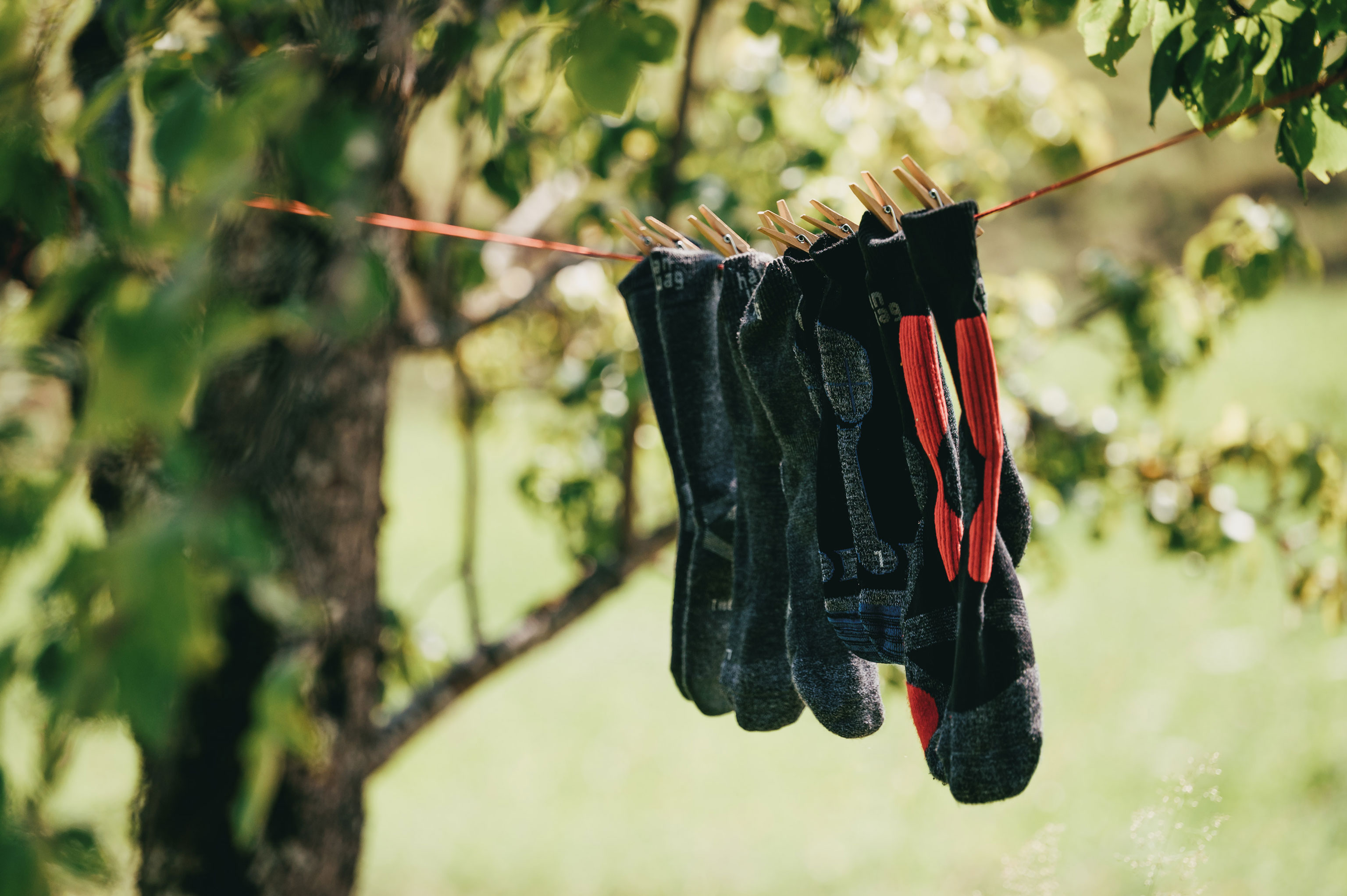
10. How should hiking socks be washed?
Most hiking socks can be washed in a washing machine with your regular wash. Always refer to the care instructions provided by the manufacturer on the packaging, however. This will also indicate the best temperature to wash them at. If you can’t find washing instructions, you should base it on the fabric they’re made from.
For socks with merino wool content:
- It’s always better to play it safe by using a mild detergent or wool washing powder / liquid. These contain no brighteners, bleach or enzymes which can damage wool fibres.
- Select either a delicates or regular washing cycle. Ample rinsing is key, so that no detergent residue is left over.
- No more than 30 degrees, or else socks might shrink.
- Most manufacturers indicate that tumble drying on low is fine (see care instructions). But for the environment, air drying socks is best.
For 100% synthetic socks:
- Regular washing detergent or special sportswear detergent
- Regular washing cycle or special synthetics cycle (sportswear cycle). Here too, make sure there is ample rinsing.
- Wash at 30 or 40 degrees, depending on the model.
- Tumble dry on low or dry naturally on the washing line.
Tip: Wash socks inside out. Most of the real dirt – sweat, skin particles etc. – is on the inside of hiking socks, and so it will wash out of the fibres easier.
No matter what materials your hiking socks are made from, just like with all your functional clothing, you should never use fabric softener. Softener may make clothes feel nice and soft, but the film it leaves around fibres prevents them from absorbing and wicking moisture. So for hiking or trekking socks, it’s best to do away with softener.
And what about holes in socks? Darning them would be the most sustainable option. However, modern functional socks will lose their functionality in the darned area. If the hole is big, we would advise that you replace your socks with a new pair.
Conclusion: A good pair of hiking socks can make all the difference
Where comfort and a pleasant wear climate are concerned, choosing the right socks is nearly as important as choosing the right footwear. As we’ve seen, which socks you choose depends on a range of factors. Determining which hiking socks are best is often a case of trying several different pairs to see what works best for you.

